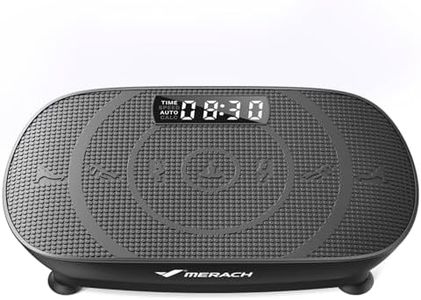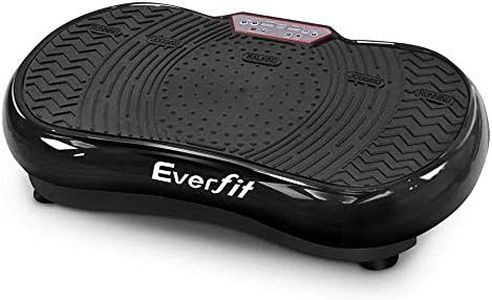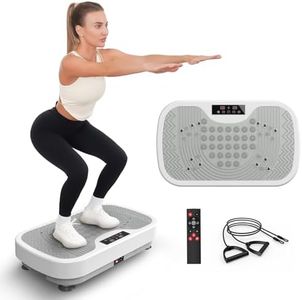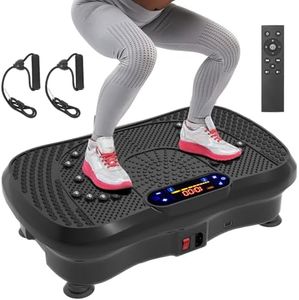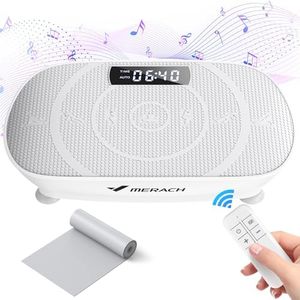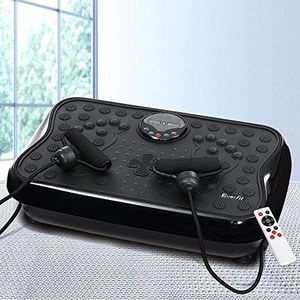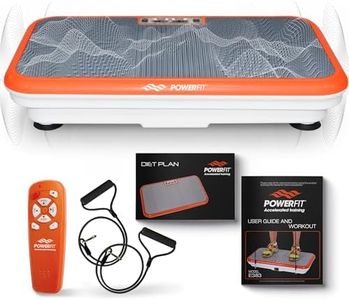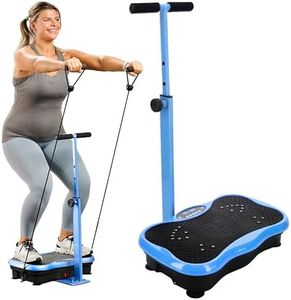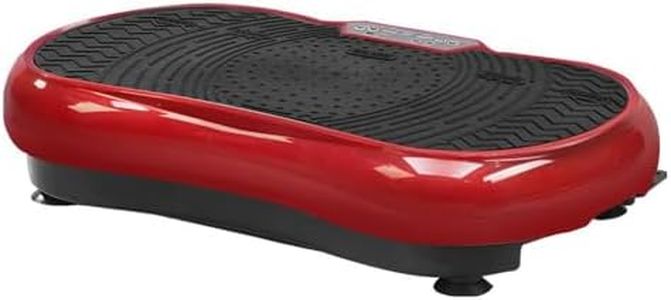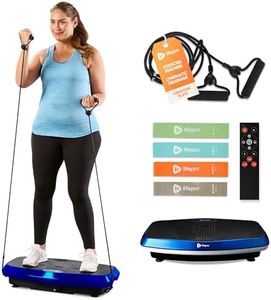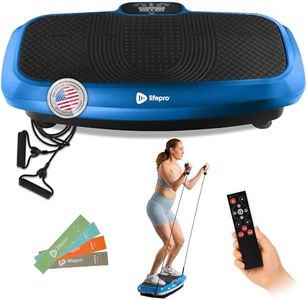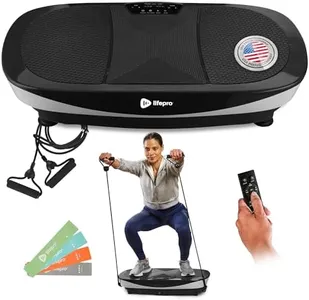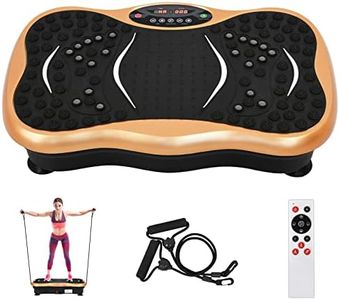We Use CookiesWe use cookies to enhance the security, performance,
functionality and for analytical and promotional activities. By continuing to browse this site you
are agreeing to our privacy policy
10 Best Vibration Platforms
From leading brands and best sellers available on the web.Buying Guide for the Best Vibration Platforms
Choosing a vibration platform can seem overwhelming given the variety of options available. The key is to understand what each feature offers and how it matches with your fitness or wellness goals. Vibration platforms are used for exercise, muscle relaxation, flexibility, and sometimes rehabilitation. When selecting the best fit for you, focus on the essential specifications and features—matching them to your intended use and personal comfort.Vibration TypeVibration type determines how the platform moves. The main kinds are oscillating (side-to-side), linear (up and down), and triplanar (a mix of directions). Oscillating vibrations are gentler and often recommended for beginners and those looking for low-impact workouts. Linear vibrations provide a stronger, more intense experience that may suit people seeking greater muscle stimulation. Triplanar vibrations combine both and are geared toward advanced users or athletes. Consider your fitness level and comfort preference—if you are starting or need a gentle experience, oscillating may be best, while experienced users may benefit from linear or triplanar types.
Frequency RangeFrequency refers to how fast the platform vibrates, usually measured in Hertz (Hz). Lower frequencies (5-15 Hz) are typically for relaxation or improved circulation, mid-range frequencies (15-30 Hz) work well for muscle toning and general fitness, and higher frequencies (30-60 Hz) are intended for advanced training and therapeutic use. If you plan regular exercise, look for a platform that covers the mid-to-high frequency range. If your goal is primarily stretching or relaxing, a lower-frequency model may suit you. Versatile platforms with a wide adjustable range work for multiple purposes.
AmplitudeAmplitude measures how far the platform moves with each vibration, often given in millimeters. Lower amplitude (1-2 mm) provides gentle stimulation ideal for beginners, people with sensitive joints, or those focused on flexibility. Higher amplitude (3-8 mm or more) produces stronger movement, stimulating muscles more deeply, which benefits people seeking intense workouts. If you have balance issues or are recovering from injury, lower amplitude is safer. Choose the amplitude based on your fitness level and whether you want a gentle or intensive experience.
Weight CapacityWeight capacity tells you the maximum user weight the platform can safely handle. Models with higher limits are generally more stable and suitable for all body types. If you’re at the higher end of the weight spectrum or plan to use the platform with added weights for strength training, choose a model with a capacity well above your body weight for safety and longevity.
Size and Surface AreaThe size and surface area of the vibration platform dictate how much space you’ll have for various exercises and movements. Compact platforms are good for standing or basic moves and fit well in small spaces, but may limit exercise variety. Larger surfaces enable wider stances and more exercise options, ideal if you plan to do different workouts, stretches, or use the platform with accessories. Consider the available space in your home and your workout intentions when deciding on the right size.
Controls and ProgramsControls and pre-set programs affect how easy the platform is to use. Simple manual controls work well if you want full control over settings, while platforms with pre-set programs help guide your sessions and introduce variety. Some platforms have remote controls or app compatibility for easier adjustments. Beginners may prefer simple setups or guided programs, while experienced users might enjoy full manual control. Think about how much direction you want during your workouts and how tech-savvy you are.
